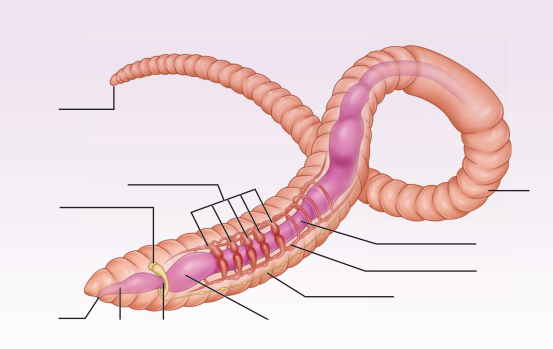Zoology - Activity and Summary - Organ and Organ Systems in Animals | 11th Zoology : Chapter 4 : Organ and Organ Systems in Animals
Chapter: 11th Zoology : Chapter 4 : Organ and Organ Systems in Animals
Activity and Summary - Organ and Organ Systems in Animals
Activity 1
Examine a quill feather. Hold the base of the central shaft with
one hand and gently bend the tip of the feather with your other hand. Be
careful not to break the feather. Next, hold the shaft and wave the feather in
the air. Record your observations concerning the structure of the quill
feather. Re-late your observations to the feather’s possible function. Describe
the function of the feather under “Function of feather” in your data table.
Examine the vane of the feather. Does the vane appear to be a
solid structure? Include a descrip-tion of the quill feather’s vane structure
under “Structure of feather” in your data table.
Make a drawing of the quill feather. Label the shaft, vanes and
barbs. Compare your diagram with the feather.
Activity 2
Students
are divided into groups of three or four and given an earthworm on a damp paper towel. The paper towel should be placed
in container so that the worms do not
move away. For two minutes, students should observe the worm and record its
behavior and morphology. Identify the earthworm’s anterior, posterior ends and
its external apertures and locate the earthworm’s clitellum. Using a battery
torch, focus light on the earthworm and observe whether the earthworm moves
towards light or away from light. Why? This will be recorded on their lab sheet
under “Worm’s behaviour and morphology.” Students can then watch a short video
of an earthworm dissection where the different organs of the worm are labelled
and explained. Ask the students to label the different parts of the worm and
its anatomy after watching the video. At the end of the lab work, students may
be asked to recall about the parts of the worm’s body responsible for
regulating, signalling, and performing its behaviour.

Earthworm dissection video
http://www.youtube.com/watch?v=A2BY0hRUA9E
In the
given diagram using the terms given below, label the parts of the worm:
Mouth,
Anus, Brain, Crop, Gizzard, Intestine, Pharynx, Segments, Clitellum, Blood vessels, Hearts, Oesophagus, and Nerve
Cord.
SUMMARY
Earthworm, Cockroach and Frog show characteristic features in
body organization. Lampito mauritii
(earthworm) is commonly found in Tamil Nadu, its body is covered by cuticle. It
has a long and cylindrical narrow body which is bilaterally symmetrical. All
segments of its body are alike except the 14 to 17 segments, which are thick
and dark and glandular, forming the clitellum. This helps in the formation of
cocoons. A ring of S-shaped chitinous setae is found in each segment. These
setae help in locomotion. Earthworm's development is direct and no larva is
formed during development.
Cockroach is a typical cosmopolitan insect and exhibits all the
fundamental characteristics of class Insecta. The body of the cockroach is
compressed dor-so-ventrally, bilaterally symmetrical, seg-mented and divisible
into three distinct regions – head, thorax and Abdomen. The photoreceptor organ
of the cockroach consists of a pair of compound eyes with mosaic vision.
Segments bear jointed ap-pendages. There are three throacic seg-ments of each
bearing a pair of walking legs. Two pairs of wings are present, one pair each
on 2nd and 3rd segment. There are ten segments in
abdomen. Fertilization is internal. The development of cockroach is gradual
through nymphal stages (pau-rometabolus).
Frogs are cold blooded vertebrates – Poikilotherms. Skin is
smooth and moist, Red blood corpuscles are nucleated. Eggs are laid in water.
The larvae pass through an aquatic stage before metamorphosing into adult.
Birds are warm blooded, bipedal ver-tebrates. They have an
exoskeleton of feathers. Their forelimbs are modified into wings to aid in
aerial mode of life.
Related Topics